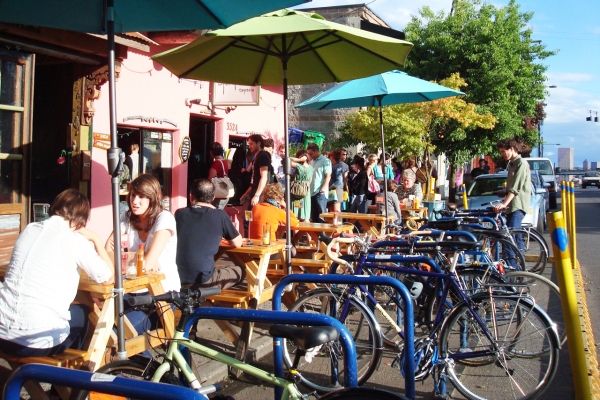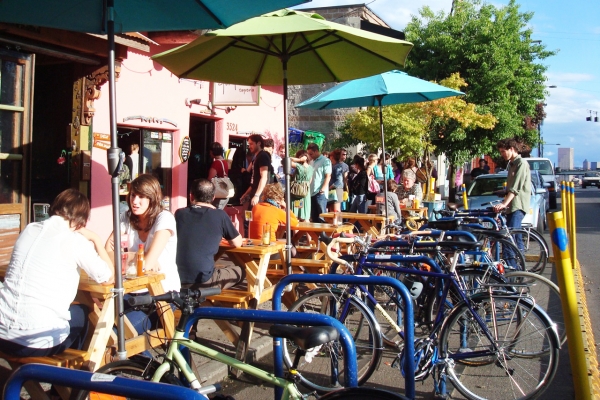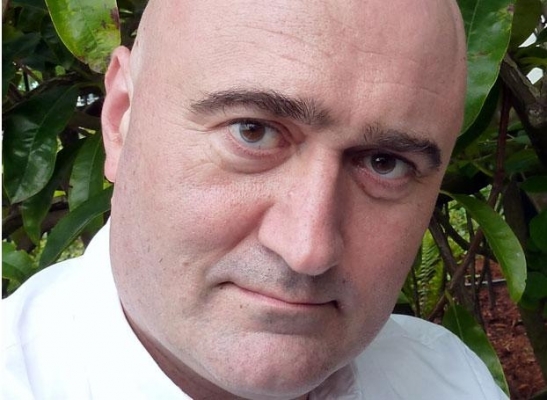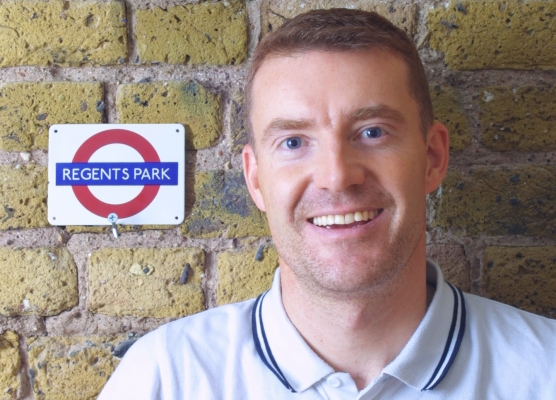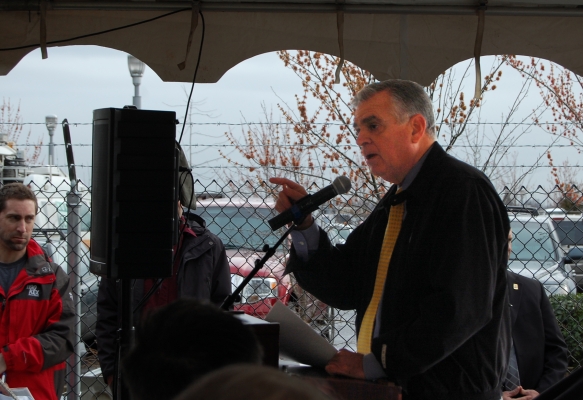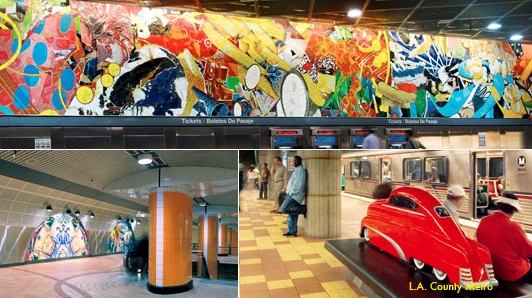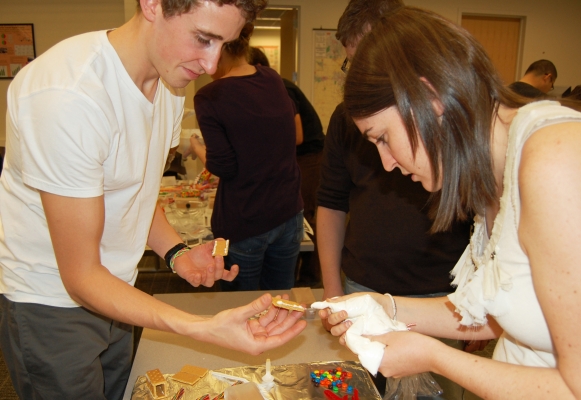Bicycle commuters represent a significant chunk of business consumers in Portland, Ore., one of America's most bike-friendly cities. OTREC research in the past year has provided data on how cyclists and other mode users patronize local businesses.
OTREC has selected its first roster of projects under the new National Institute for Transportation and Communities, or NITC, program. The program’s executive committee chose 19 projects, totaling $1.97 million, under the NITC theme of safe, healthy and sustainable transportation to foster livable communities.
The projects have national implications and reflect priority areas including public health, equity and transit. True to the program’s multidisciplinary nature, projects extend beyond transportation engineering and planning to include sociology, chemistry, economics and more—10 disciplines in all.
While Portland State University, the University of Oregon and the Oregon Institute...
Read moreFor transit planning expert Jarrett Walker, one of the fundamentals of transit is also one of the hardest points for people to figure out: you can’t make good transit-system decisions from behind the wheel of a car.
“If you’re a habitual motorist, it doesn’t matter how much you support transit, there are certain things about it you’re not likely to get,” Walker said. “One the most basic, if you’re a motorist or a cyclist for that matter, you’re going to appreciate the concept of speed but not the concept of frequency.
“In urban transit, frequency is vastly more important than speed in determining how soon you get where you're going.”
Walker, the author of “Human Transit: How Clearer Thinking About Public Transit Can Enrich Our Communities And Our Lives,” presents his work at three OTREC-sponsored forums in Eugene and Portland May 16-18. Click here for more information on the presentations and Walker.
While driving or cycling faster typically means arriving earlier, slow transit vehicles that run often will get you to your destination sooner than fast, infrequent ones, Walker said. “It’s very difficult to get motorists to understand that importance. I tell them to imagine a gate at the end of your...
Read moreThe Initiative for Bicycle and Pedestrian Innovation has received a gift to support an annual transportation lecture at Portland State University. The gift, which establishes the Ann Niles Transportation Lecture Endowment, was finalized last month.
Created by Philip Niles in memory of his late wife, Ann, the endowment will bring a speaker each year to address transportation and planning issues for students, faculty and the community. Ann Niles was a strong advocate for livable neighborhoods and served on many transportation-related boards and committees in Portland.
Ann Niles grew up in Grants Pass, Ore., and graduated from Reed College in Portland, where she met Philip. She earned a graduate degree in library science from the University of Minnesota and began her career at the Carleton College library.
Ann and Philip retired in 1999 and returned to Portland. Ann developed a second career in urban development and transportation and worked with the city of Portland and the Pearl District Neighborhood Association. She chaired the Pearl District Transportation Committee for eight years, promoting better sidewalks and crosswalks for pedestrians and better bicycle routes and parking throughout downtown Portland. Ann also represented the Pearl District on the Portland Streetcar Citizens Advisory Committee and the advisory committee for Portland’s transit mall revitalization.
Details on the lecture series,...
Read moreDesigning efficient transit systems is only one piece of the puzzle. Getting people to use them is another.
In his bestselling “Transit Maps of the World” and followup work “Paris Metro Style: In Map and Station Design,” Mark Ovenden detailed the beauty of maps people use to navigate transit systems and of the stations themselves.
“When you walk into the Paris Metro system, with its art nouveau stations, it does affect you, whether you notice it or not,” Ovenden said. “It feels nice to be in. It encourages people to use the train.”
Ovenden will offer his take on transportation systems as the keynote speaker at the Oregon Transportation Summit, Friday, Sept. 9 at Portland State University.
Ovenden vaulted to fame with “Transit Maps of the World” after a career in radio and television. But he always had an interest in collecting maps and riding transit systems. “On a school trip to Paris at 9 or 10, I just wanted to ride the Metro all day,” he said. “The teacher said, ‘no, come with us to the Eiffel Tower, you idiot.’”
Even out of context, the maps Ovenden compiled serve as an art work. But much of their beauty lies in their function: getting people around smoothly. Some of the best...
Read moreIn a tent in a parking lot under a freeway bridge, Ray LaHood saw the future of the country’s transportation network Tuesday. The U.S. Secretary of Transportation spoke to reporters, dignitaries and construction workers in the muddy work zone of Southwest Moody Avenue.
Last year, the project to rebuild Moody Avenue received a $23.2 million grant from the federal stimulus package. The project will double the streetcar tracks and add a cycle track and sidewalks. It will also ease connections to a new transit bridge that will carry the Portland-Milwaukie light rail line, the eastside streetcar loop, cyclists and pedestrians.
LaHood, joined by the area's congressional delegation, city and state officials, stressed the jobs the project is creating and the boost for the mix of transportation modes it represents. The project will also reduce congestion, LaHood said, by making transit attractive to current and future residents and employees.
Before construction started along Moody, automobile congestion was virtually nonexistent. However, it’s a heavily trafficked bicycle route connecting Portland’s cycle-friendly downtown bridges with its largest employer, Oregon Health and Science University.
By allowing choices of light-rail train, streetcar, bicycle and shoe leather, the project stands to boost those forms of transportation. If commuters leave their cars at home, that represents a reduction in congestion elsewhere. Of course, the project will also add...
Read moreTuesday, Jan. 25 dispatch from the Transportation Research Board annual meeting:
Sometimes even stimulus needs a little stimulus. That was certainly true in Los Angeles County, faced with a backlog of transportation needs.
Doug Failing, chief planner with the Los Angeles County Metropolitan Transportation Authority, or Metro, spoke at a session at the Transportation Research Board's annual meeting titled “How the implementation of ARRA-TIGER projects was accelerated: a tale of four cities.”
The Los Angeles tale is one of good fortune and good timing. As talk of a federal stimulus package was heating up, the county passed Measure R in November 2008. The sales tax measure would commit a projected $40 billion to transportation projects over the next 30 years.
The federal stimulus project gave that effort a boost when it passed in early 2009. Metro then took a further step, Failing said: the agency would speed up 12 key mass-transit projects to be completed within 10 years instead of 30.
Transportation-system investments have gone a long way toward moving people more efficiently in an area known for its gridlock. Once the worst metro area in the country in terms of hours spent in traffic, that number has declined over the last decade, with other cities taking over...
Read moreEven residents of a gingerbread candyland can't get around with holiday magic alone. After all, Santa's elves still need a reliable way to get from their cozy homes to the workshop.
Sadly, transportation planners have turned a frosty shoulder to sugar-based transit systems. Until now.
On Dec. 3, Portland State University's Students in Transportation Engineering and Planning held the first gingerbread transit station competition. Four teams of students pulled their attention away from human transit to focus on the needs of gingerbread people and misfit toys.
Dealing with building materials of unknown structural properties, students field engineered solutions. Licorice sticks stood in for steel rails, candy canes for bicycle racks. For a binding agent, students mixed cream of tartar and egg whites instead of portland cement.
The resulting transit system has already resulted in fewer traffic gum-ups and a drastic reduction in ultrafine powdered-sugar emissions. Sleigh-travel-time reliability has also improved.
Researchers are now assessing the durability of corn-syrup-reinforced composites in candy bridges, the potential for alkali-silica reaction in gingerbread pavement and the possibility that someone hungry will stumble in and eat the infrastructure.
The winning design team was Transit Wonderland, composed of Jesse Boudart, Sara Morrissey, Mark Haines and Meeyonwoo Lim.
Rick Krochalis, Federal Transit Administration (FTA) Region X Administrator, recently kicked off the Center for Transportation Seminar Series on January 8th with a presentation on the Regional Implications of the Federal Livability Initiative. The presentation touched on the federal interagency partnership in addition to FTA’s involvement in the effort. Smart growth and transit-oriented development are not new concepts. With growing congestion, energy use, greenhouse gas emissions, needs for maintaining a state of good repair on existing transportation systems in addition to a growing and aging and population in the United States; transit is playing a key role in helping address these issues.The seminar was followed with with a roundtable group discussion with TriMet and local partners; and meeting with faculty and students highlighting transit-related research. You can download the podcast or view the seminar if you missed the presentation. Livability is also the theme for the winter transportation seminar series.

